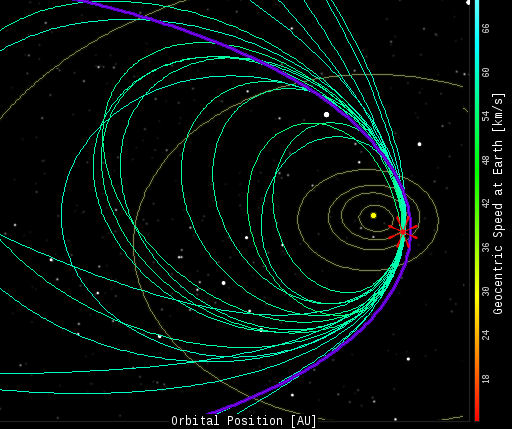CURIOSITY'S FIRST DAREDEVIL STUNT: When Curiosity enters the Martian atmosphere on August 6th, setting in motion "the seven minutes of terror" that people are buzzing about, the rover will actually be performing the mission's second daredevil stunt. The first, involving solar flares, was completed in July. [full story]
EARLY PERSEID METEORS: Earth is entering a broad stream of debris from Comet Swift-Tuttle, source of the annual Perseid meteor shower. Meteoroids in the outskirts of the stream are now hitting Earth's atmosphere, producing as many as 10-15 meteors per hour according to worldwide counts from the International Meteor Organization. NASA's network of all-sky meteor cameras captured 17 Perseid fireballs on the nights of July 28th through 30th. Here are their orbits:

The position of Earth is denoted by the red starburst; all of the meteoroid orbits intersect at that point. The purple line traces the orbit of the parent Comet Swift-Tuttle. Fortunately, the comet itself does not intersect Earth.